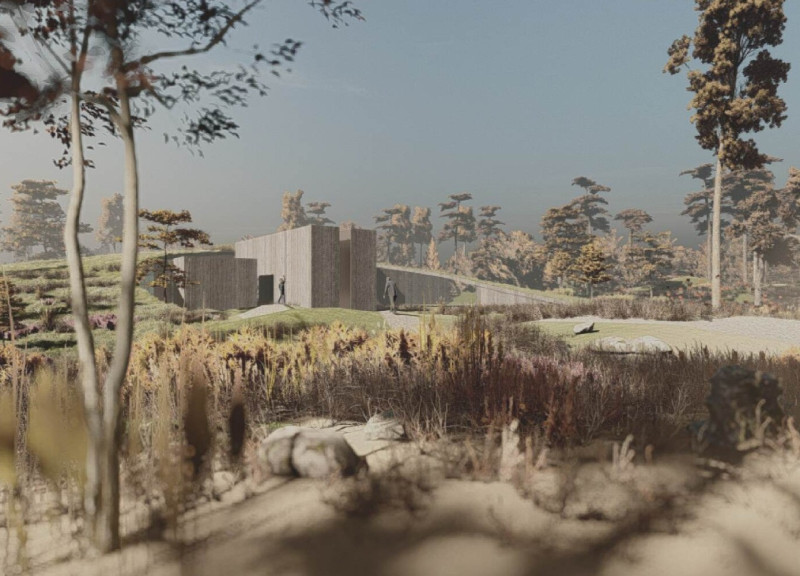5 key facts about this project
The Tide House, located in the Dutch Veluwe, serves as a hospice for the terminally ill. It presents a design that emphasizes a nurturing environment and a connection to nature. By focusing on life rather than death, the building aims to provide a comforting space for visitors and residents alike. The architecture blends harmoniously with its surroundings, using elevation and landscaping to create a cohesive experience.
Structure and Form
The building appears as a raised sheet of land, where multiple rooms are located beneath a green surface. Laminated wooden beams provide structural support, allowing the Tide House to merge with the terrain. The green roof not only contributes to the aesthetic appeal but also promotes ecological sustainability, creating a natural habitat for local flora and fauna.
Interior Layout
Inside, the layout resembles a village, with interconnected spaces designed for both community and solitude. A central oculus acts as the heart of the building, allowing natural light to pour in and creating a focal point for gatherings. This arrangement encourages social interaction while also providing private areas for reflection and peace, catering to the various needs of the residents.
Engagement with Nature
The central hall invites the elements inside, allowing sunlight, wind, and rain to influence the atmosphere. Carefully placed openings in the roof and walls create visual connections to the outside world, reminding occupants of the changing seasons. This design choice enhances the feeling of tranquility, making the passage of time more significant in a space dedicated to care.
Materiality
Materials were chosen to enhance both function and comfort. Laminated wood adds warmth, while concrete flooring offers durability for daily use. The wooden facade reinforces the building's link to its natural surroundings, and steel elements provide necessary structural support. Together, these materials reflect the purpose of creating a welcoming and supportive environment.
Light fills the central oculus, drawing the eye upward and inviting occupants to appreciate the beauty of the natural world beyond the walls.



















































